AI-powered business process insights shared by over 1000 AI leaders globally.
Much like the arrival of the internet transformed communication, AI is quickly becoming the digital backbone of enterprise operations, fundamentally reimagining every process and reshaping how organizations automate and optimize.
But as enterprises accelerate AI adoption, urgent questions emerge:
- Which AI use cases are truly driving measurable value?
- How are enterprises integrating AI to orchestrate complex operations?
- What barriers remain to scaling AI for process automation securely and efficiently?
The Kore.ai report, AI Use Cases: Insights from AI Decision Makers—2025, brings fresh clarity to these questions. Based on insights from 1000+ enterprise leaders, it reveals how AI is being used across enterprise processes.
This blog gives you an inside look at how global enterprises are deploying AI-driven orchestration, the priorities shaping their investments, and the lessons learned from early projects.
Let’s dive in.
Surveyed in March 2025 by Paradoxes and supported by Kore.ai, ‘AI Use Cases: Insights from AI Decision Makers – 2025’ reveals how enterprise leaders think about AI, primary use cases, challenges, success metrics, and planning for future AI.
The survey gathered insights from over 1000 senior business and technology leaders across 12 countries, including the U.S., UK, Germany, UAE, India, Singapore, Philippines, Japan, Korea, Australia, and New Zealand.
Download the complete report.)
AI for business process: a strategic shift in operations
As enterprises move from AI interest to AI integration, process automation has emerged as one of the most powerful and widely adopted use cases. According to the Kore.ai survey, 44% of organizations identify it as the most important use case for digital transformation.
This aligns with Gartner’s AI Use Case report, which places process orchestration among the highest-impact applications across industries.

Industries with high operational complexity, like transportation and government, are at the forefront, leveraging AI to manage massive operations and boost speed. Right behind are business services, insurance, telecommunications, travel, and financial services, sectors that benefit from frequent but lower-risk process orchestration. Meanwhile, healthcare and retail take a more measured approach, prioritizing caution and data sensitivity over rapid automation.
Adoption is strong across diverse regions. Countries like the US (32%), the UK (27%), Germany (30%), and Canada all rate business process AI as their most crucial use case. Similarly, growth is high in the UAE (33%), India (35%), Singapore (28%), the Philippines (32%), and Japan (33%), reflecting global recognition of AI’s impact on operational efficiency.
AI for business process: where is it driving real value?
As AI moves from pilot projects into routine practice, it’s clear exactly where enterprises are applying AI to enhance business processes.

- Analytics and insights lead adoption, with 75% of enterprises using AI to uncover actionable data patterns, detect anomalies, and drive smarter decisions.
- Process automation follows closely at 70% adoption, helping reduce manual effort and scale execution with greater consistency and speed.
- Information discovery is at 63%, where organizations use enterprise search to enable faster access to documents, policies, and critical data.
- Workflow optimization is gaining ground at 55% adoption, streamlining coordination across teams and departments for smoother task execution.
AI for business process challenges: what’s holding enterprises back?
While AI promises to revolutionize business processes, many organizations face significant hurdles slowing down adoption and impact.
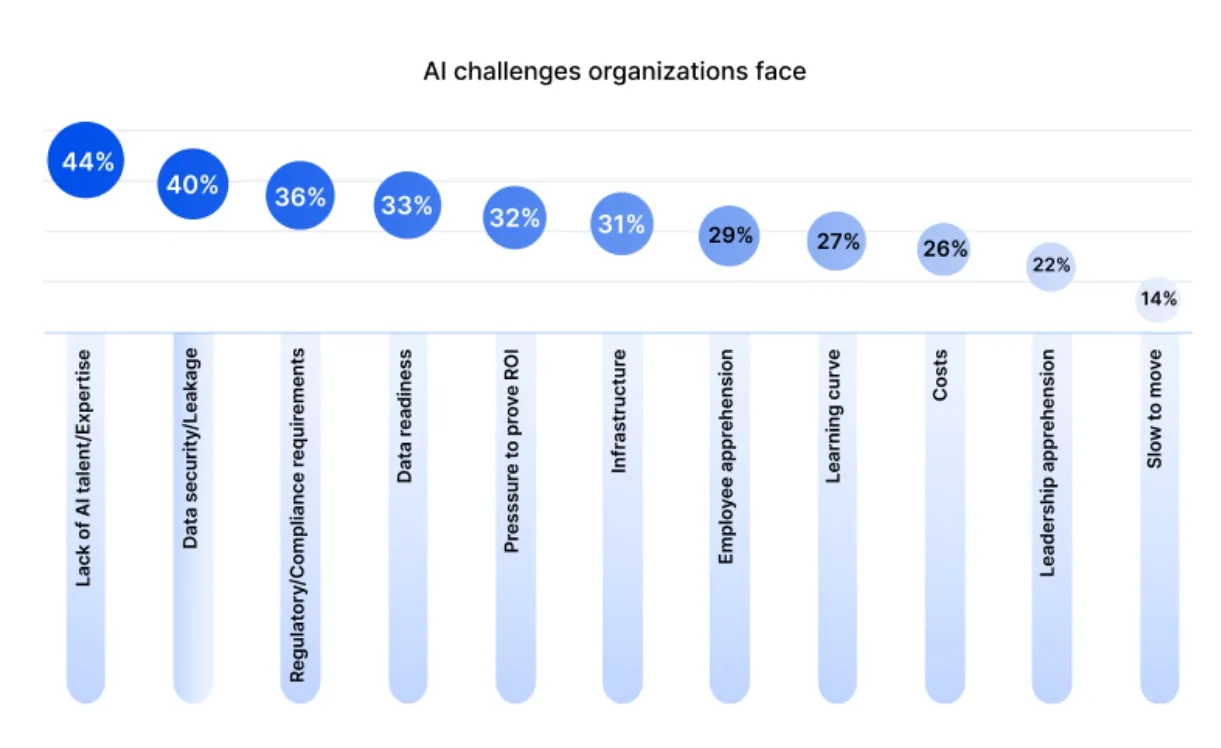
Talent gaps
AI talent and expertise gaps top the list, cited by 44% of participants. Enterprises struggle to find and develop professionals skilled in deploying, managing, and scaling complex AI-driven process automation. This mirrors findings from McKinsey, which highlights that 46% of enterprise leaders cite skill gaps as a major barrier to AI adoption and they need to reskill their workforce within the next three years to keep pace with AI adoption.
Data security and leakage
Data security and leakage concerns follow closely at 40%, reflecting the critical need to protect sensitive operational data and maintain compliance. This aligns with Microsoft's report that says, data security is a top challenge, and leaders are hesitant to fully embrace AI until they adopt a stronger data security posture and data governance structure.
Regulatory compliance
Regulatory compliance requirements are flagged by 37%, especially in industries with strict governance, adding complexity to AI implementation. In contrast, cost concerns, leadership approvals, and internal resistance are not viewed as major obstacles while adopting AI for process, suggesting strong executive support and recognition of AI-driven process automation as a vital strategic investment.
How are enterprises measuring AI for business process success?
As AI becomes a staple in daily business operations, enterprise leaders are increasingly focused on its real impact. The survey reveals that organizations are holding AI accountable for clear business outcomes and measuring success through an operational lens.

The top success metrics are quality of output (13%) and operational efficiency (12.5%), showing a keen focus on faster, smoother, and scalable work execution. These indicators reflect a shift away from experimental hype toward outcome-driven deployment. Interestingly, ROI does not rank among the top five metrics, suggesting organizations prioritize strengthening process execution and reducing risks over immediate financial returns. This shift toward outcome-driven KPIs aligns with broader AI research, including insights from McKinsey, which says enterprises measure AI success through improvements in speed, quality, and operational rigor rather than technology adoption alone.
Lessons learned: what early AI for business process projects reveal
With early AI deployments now yielding mixed results, many organizations are recalibrating their approach by turning past lessons into next steps.
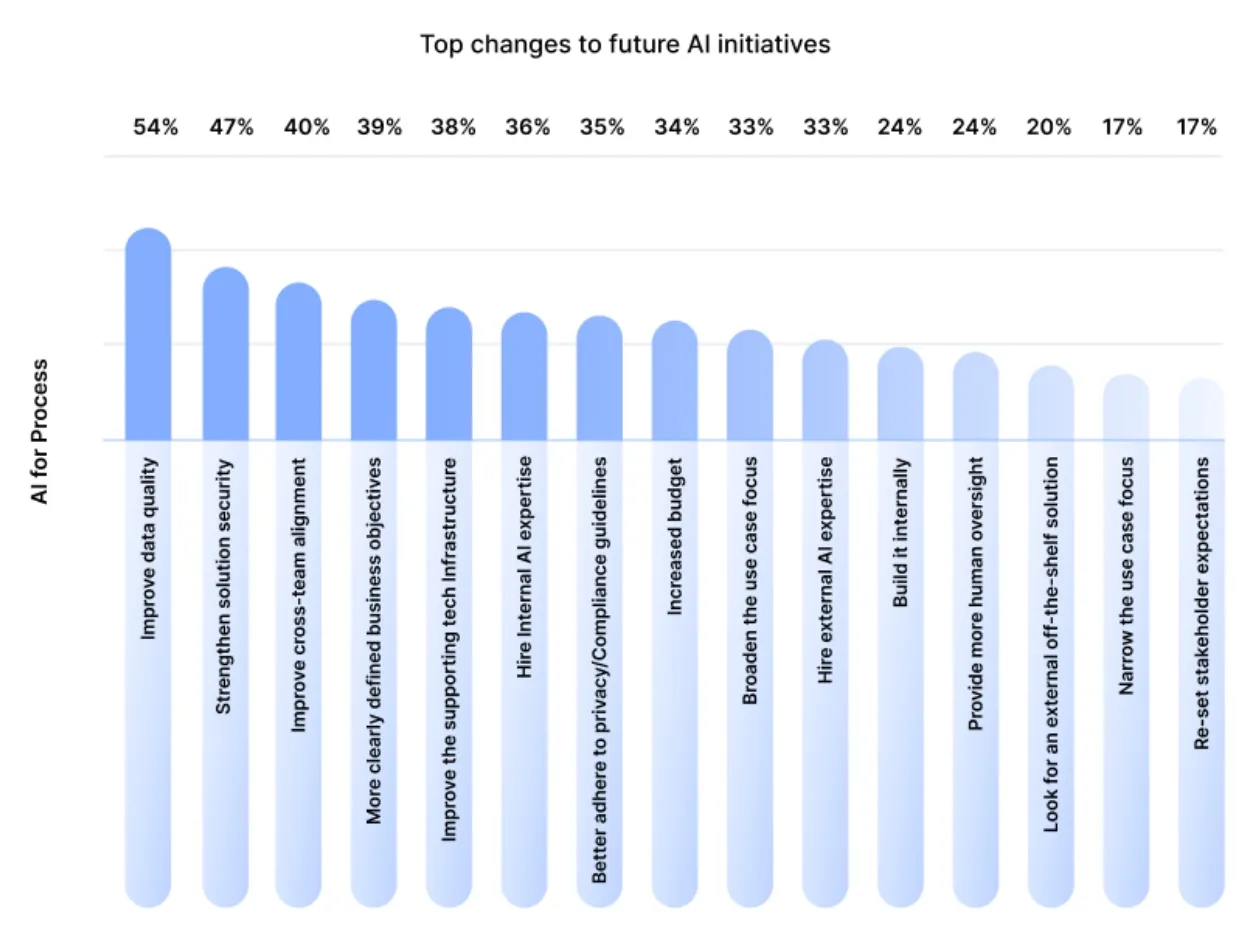
When asked, “Looking back on AI projects, what changes in future projects would you make?” nearly 70% of respondents cite plans to strengthen AI expertise, though they remain divided nearly equally between upskilling internally and hiring external talent. This shift underscores the growing need for AI fluency across business and technical teams, a foundational requirement for scaling AI in operations.
Beyond talent, 54% of respondents aim to improve data quality, recognizing that clean, contextual, and well-governed data is critical for effective AI performance. Additionally, 47% highlight the importance of strengthening security protocols to protect sensitive operational information, while 40% emphasize enhancing cross-team collaboration to align AI initiatives with business objectives.
These learnings signal a broader transition: from building isolated prototypes to establishing AI readiness—scalable, secure, and integrated across enterprise workflows.
Investment outlook: AI for business processes is gaining ground
Despite early adoption hurdles and a steep learning curve, enterprise conviction around AI for workplace use cases remains robust. According to the survey, 88% of organizations plan to increase investment in AI for workplace use cases over the coming months, while 11% expect spending to remain steady, and only 1% plan to scale back.

This upward trajectory is supported by a McKinsey study showing that, over the next three years, 92 percent of companies plan to increase their AI investments – a dramatic rise that signals growing trust in AI’s business impact.
Final thoughts: AI for business processes is accelerating
If there’s one thing this research makes clear, it’s that AI is rapidly becoming a core pillar of how organizations operate. From expanding budgets to scaled deployments, leaders are showing strong conviction in AI’s ability to drive measurable impact on business processes.
But confidence comes with responsibility.
As organizations invest in AI tools, talent, and infrastructure, they also face rising expectations around security, performance, and measurable outcomes. The real differentiator will be how enterprises embed Agentic AI, not just into isolated systems, but into everyday workflows, decision-making, and execution across all functions.
This blog only captures key highlights. The full Kore.ai AI Use Case Report digs much deeper, exploring how top-performing organizations are turning AI potential into scalable, operational excellence.
FAQs
Q1. What is AI for business process orchestration?
AI for business process orchestration refers to the use of AI to automate and enhance enterprise operations. It enables organizations to identify inefficiencies, predict bottlenecks, and streamline complex workflows across departments. By embedding AI into routine operations, enterprises can achieve higher accuracy, agility, and scalability, turning process excellence into a measurable business advantage.
Q2. What are some examples of AI for process orchestration?
Common examples include:
- Process automation and orchestration: automating repetitive tasks such as data entry, approvals, or report generation.
- Predictive analytics: anticipating demand fluctuations, supply chain issues, or system failures before they occur.
- Process mining: mapping workflows to identify redundancies and optimize execution speed.
Q3. How is Agentic AI transforming business processes?
Agentic AI marks the next leap in enterprise automation. Unlike traditional AI systems that rely on predefined rules, Agentic AI can reason, plan, and act autonomously. For example, an AI agent could detect a bottleneck in invoice approvals, automatically reroute tasks to available team members, and notify stakeholders, all without human intervention.
Q4. What are the benefits of using AI for business process orchestration?
AI delivers both operational and strategic benefits:
- Efficiency and speed: streamlines manual processes, cutting turnaround times
- Cost reduction: minimizes resource waste and operational overhead
- Quality and accuracy: ensures consistency in outputs through intelligent validation and automation
- Agility: helps businesses adapt quickly to market or internal changes.
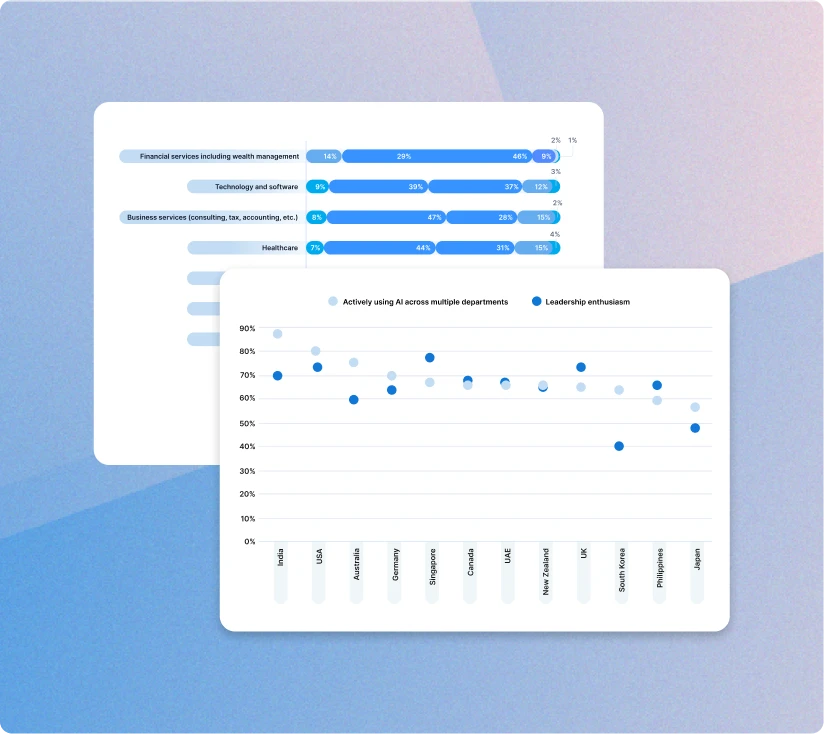



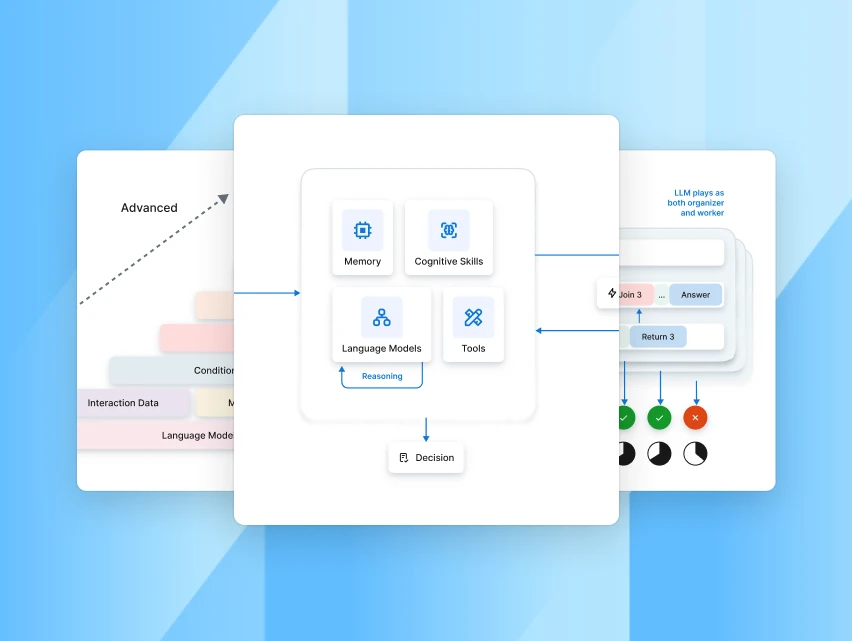

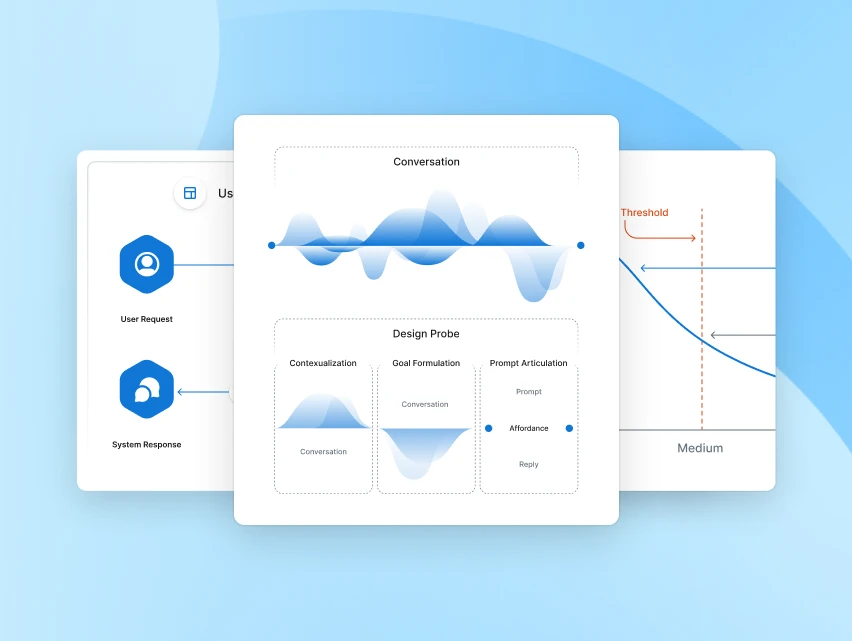
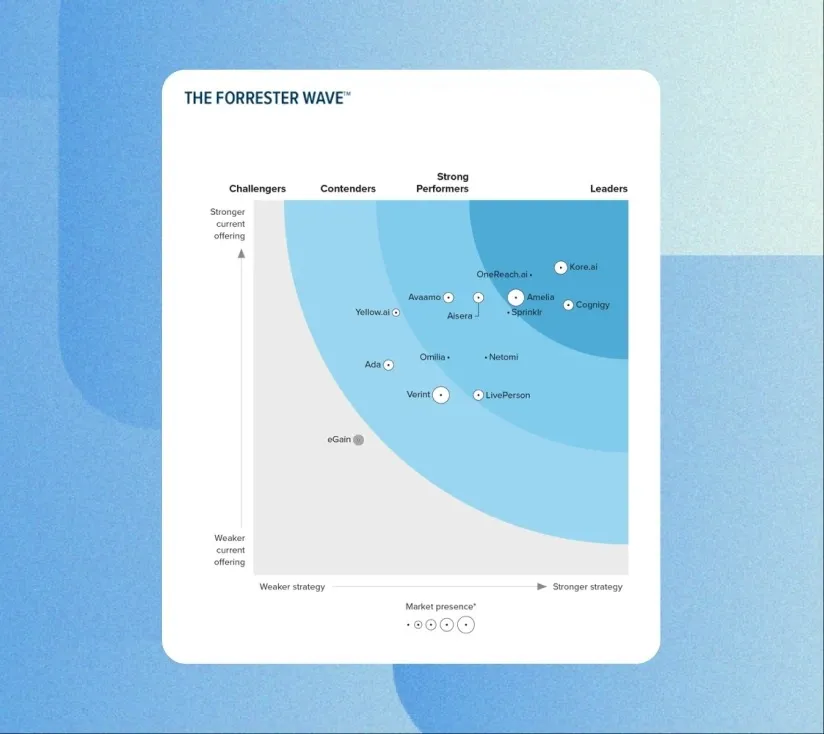


.webp)
.jpg)





